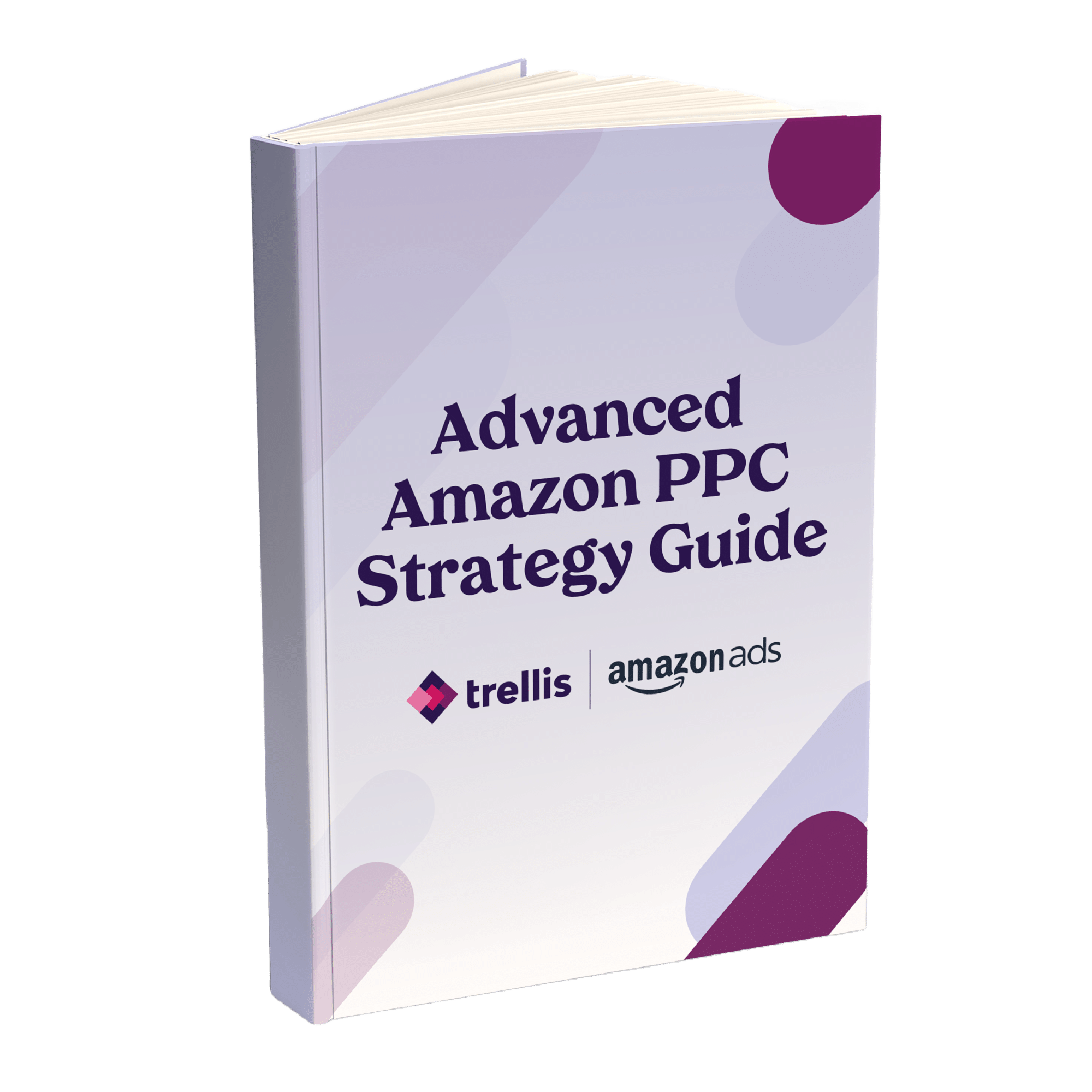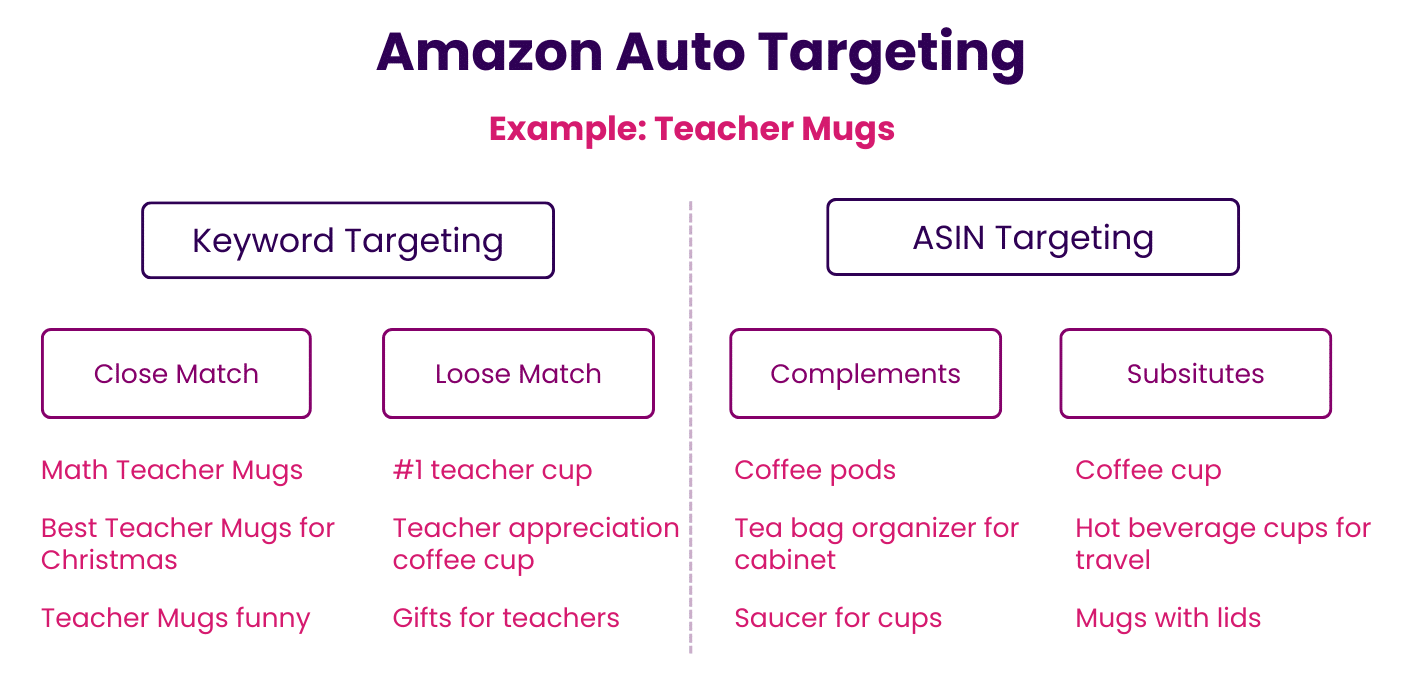With all of its features, tools, and benefits, Amazon advertising can be overwhelming for eCommerce businesses at first glance – but also very lucrative! However, one strategy that may help you get on top in this competitive market is using automatic targeting on Amazon, especially if you are a PPC beginner.
In this blog, we’ll look at when it is optimal to use Amazon automatic targeting, types of automatic targeting, and the best strategies to make the most of automatic targeting.
What is Amazon Automatic Targeting?
Automatic targeting allows Amazon to decide where and when a product ad is displayed. This type of ad targeting focuses on keywords that Amazon’s algorithm deems relevant to multiple elements of a product listing including, the title and description.
In automatic targeting, Amazon optimizes advertising campaigns over time by collecting data from shoppers’ purchases and adjusts ads accordingly to increase conversion and click-through rates.

Increase Amazon Sales By 30%
Our Advanced Amazon PPC Guide is everything you need to take your Amazon profits to the next level.
What are the Benefits of Automatic Targeting?
Automatic targeting is ideal for sellers that are new to Amazon advertising and are looking to explore their target audiences. Moreover, it is also suitable for those who want to get started with Amazon advertising but are unsure of where to begin in terms of bidding and finding new keywords.
Automatic targeting can help increase the visibility of your products and generate desired outcomes if you don’t have the time to monitor and manage manual advertising campaigns.
What are the Different Types of Automatic Targeting?
Amazon allows four different match types for automatic targeting. These include:
- Close Match
- Loose Match
- Substitutes
- Complements

Overview of Close Match and Loose Match
Close Match and Loose Match are used for keyword targeting whereas, Substitutes and Complements target products. Close Match and Loose Match represent the extent of closeness to the keywords used in a product listing. Therefore, a product ad becomes eligible to be shown in the search results if the product matches closely or loosely with the query of a shopper.
Examples of Close Match and Loose Match
Here is an example of how a Close Match works on Amazon. Let’s say you are selling pet shampoo. In that case, you would get impressions for pet shampoo for dogs and pet shampoo for cats.
In the case of a Loose Match, Amazon matches keywords more liberally. This is crucial to boost brand awareness and enhance product discoverability. An example of this is that the keyword ‘gloves’ can match with ‘thermal gloves’ and ‘winter gloves’.
Overview of Substitutes and Complements
With Substitutes and Complements, ads for products that are substitutes or complements for another product are shown to shoppers that land on the detail pages of that product.
Examples of Substitutes and Complements
Substitutes also play a key role in raising brand awareness and work as an ideal solution for new entrants on Amazon. An example of how automatic targeting works, in this case, is that if you are selling sandals, you would get impressions for flip-flops.
Complements help drive traffic from products that add value to what you are selling. A quick search showed us that for the example of ‘hair dryer’, it is possible to get visibility for products such as ‘hair dryer wall mount’ and ‘hair dryer case’. This is an excellent way of increasing impressions through additional sources that you were not using before.
Should I Use Automatic vs. Manual Targeting?
As the name suggests, manual targeting is when Amazon sellers determine the keywords and bids for their advertising campaigns. This type of strategy is more effective for sellers and businesses that have prior targeting experience. In addition to that, it is also useful for sellers that have an understanding of the keywords they intend to target through their campaigns.
To make an informed decision about automatic or manual targeting, it is best to determine whether you have comprehensive knowledge of Amazon PPC. For a comparative analysis of automatic vs manual targeting on Amazon, read our complete guide here.
What is the Best Strategy to Make the Most of Automatic Targeting?
Whether you are an Amazon advertising beginner or a master, optimization is key!
When opting for automatic targeting on Amazon, sellers have no control over their bids which can lead to a higher Amazon ACoS. This is because the bids for high, medium, and low converting (or even negative keywords) are equal.
Many sellers feel discouraged at the prospect of losing their ad spend when implementing automatic targeting ad campaigns. Therefore, it is imperative to constantly analyze data trends to help your campaign perform better and introduce new strategies such as manual targeting.
Moreover, as you try to navigate your Amazon PPC campaigns, you can also consider using an advertising automation platform such as Trellis to boost effective demand in a competitive eCommerce landscape.
Trellis Improves Your Auto Campaigns
Essentially, Trellis automates bidding and pricing through AI algorithms. It also lets you control bidding on individual keywords. While you get the benefits of Amazon Auto Campaigns, you have similar control of Manual Campaigns.
Amazon automatic targeting is the perfect launchpad for PPC beginners. However, Trellis makes campaign optimization simpler which lets any advertiser, regardless of experience or time, gets the desired result quickly.
Advertising automation solutions such as Trellis can dynamically manage your bids based on data-driven insights, that too in real-time. With 1B+ bids managed so far and a roster of 200k products in the system, Trellis is the ultimate demand generation platform for Amazon.

Increase Amazon Sales By 30%
Our Advanced Amazon PPC Guide is everything you need to take your Amazon profits to the next level.



